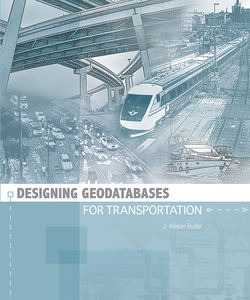Читать книгу Designing Geodatabases for Transportation - J. Allison Butler - Страница 20
Tables
ОглавлениеThe next step along the evolutionary line of database design is the table, which is a fundamental data organization unit of a relational database. A table looks very much like a file in the way it is presented to the user by the RDBMS in which it exists: a set of rows (records) and columns (fields). Rows represent members and columns represent attributes.1 However, you cannot simply copy a table as you can a file, because each table is tightly bound to the RDBMS.
Figure 2.3 Tables An application seeking to use the data stored in a relational table needs to know the name of the table and the name of each attribute it seeks, but not the physical manner of data storage. That job is performed by the RDBMS. The primary key uniquely identifies each row. One or more foreign keys can be established to provide connections to other tables. In this example, the Position Number attribute serves as a foreign key to a table storing position descriptions, where Position Number is the primary key. Foreign keys express association relationships. Cardinality is the ratio of rows for two tables. The number that comprises each half of the ratio is the table’s multiplicity. The cardinality of this one-to-many (1:m) association relationship says that a position number must be entered for each employee and that some position numbers may not be applicable to any employee.
Dr. Edgar Codd invented relational databases in the early 1970s at IBM, although it was several years later before a working product could be devised. Such a database management system is based on relational algebra, a kind of math that controls what can happen to data in such a storage structure. Relational algebra supports seven functions2:
• Retrieve (read) row
• Update (write) row
• Define virtual relations (table views)
• Create a snapshot relation
• Define and implement security rules
• Establish and meet stability requirements
• Operate under integrity rules
Relational tables are not actually stored in the row-and-column form we typically use to visualize them, but everything you need to take from this book can be accommodated with the rows-and-columns metaphor. Oracle, SQL Server, Sybase, and Informix are commonly used RDBMS platforms. Products like Microsoft Access have much of the functionality of an RDBMS but are actually database management systems that employ files.
